Smart Key: Bast fibres—Flax, hemp and nettle, the new El Dorado of responsible fashion? The - Première Vision Paris - Denim Première Vision - Première Vision New York
Let’s unpack the secrets of sustainable materials through our Smart Keys. Diving right to the heart of eco-design issues, the Smart Keys break down existing solutions to help you become more informed in your materials sourcing. Today, let’s explore bast fibres. Their eco-friendly properties have always been well-known. In fact, until a few years ago they were still associated with clichés of bland “green” clothing. How did bast fibres make the leap from not-so-groovy-hippy attire to being all the rage in responsible fashion?
Having a b(l)ast
Bast fibres are both ancient materials and icons of eco-responsibility. Evidence of the use of flax, hemp and nettle spans thousands of years. The advent of industrialisation brought technical solutions, including machines to comb the flax and increase the capacity of spinning mills.
However, it is also this birth of the textile industry and the end of artisanal work, coupled with the ensuing rise of cotton, a fibre much easier to harvest and spin, that sent the use of bast fibres into dormancy.
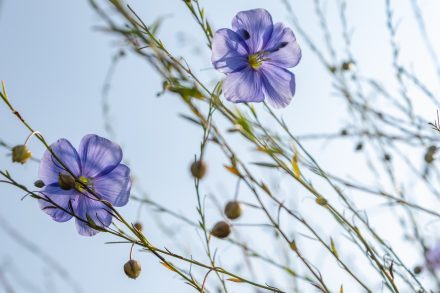
For a few years now, they have been back in the spotlight thanks to their intrinsic virtuous properties which make them more suitable options given modern-day environmental concerns. While the material dictates the drape, it was up to designers to reclaim these fibres and raise them to new stylistic heights. They moved them into new territories by playing with transparency, with their sturdiness – ideal for workwear –, or with oversized volumes that hold their shape without being stiff.
Androgenous cuts delight gender-fluid generations with an eco-conscious aesthetic, as demonstrated by the 102% increase in linen-based looks in the Summer 2021 collections! Offering lightness and strength, sophistication without showiness, they successfully embody balance and symbolise resilience in the face of climate change.
Read also: Smart Key: Key choices for a more responsible sourcing
Quality at its heart
Once the plants have been harvested, the retting process, alternating exposure to rain and sunshine, breaks down the plant pectin, allowing the fibres to be detached. Next, the mechanical separation process called scutching allows fibre extraction.
Until the 1950s, hemp underwent a similar retting and scutching process to flax. Since then, it has been defibered mechanically to separate the external fibre, the harl, from the hurd in the centre, which is used for sound and thermal insulation.
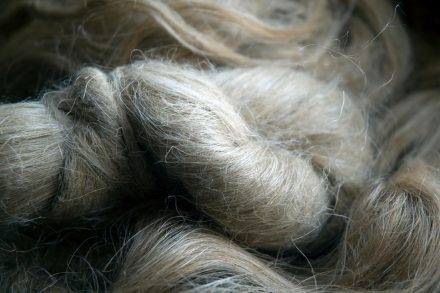
Ramie, or Chinese nettle, goes through a decortication step during which the green husk is removed. It then undergoes degumming, whereby the extracted ribbons are processed to destroy the gummy material that coats them, while preserving the fibre’s strength and sheen.
After carding and combing, the three fibres are spun in similar ways. As for a good wine, the secrets of good linen and hemp lie in the assembly of batches to achieve a consistent and stable quality.
Undeniable advantages
While the look and feel of each differ, flax, hemp and nettle present common environmental characteristics that are truly beneficial for biodiversity.
- Low demand for water – The plants rely on rainwater and are not irrigated unless under extreme water stress
- Minimal inputs – The soil’s resources can be sufficient for these resistant plants, or may be combined with sensible agricultural practices, as demonstrated by the producers of European Flax®
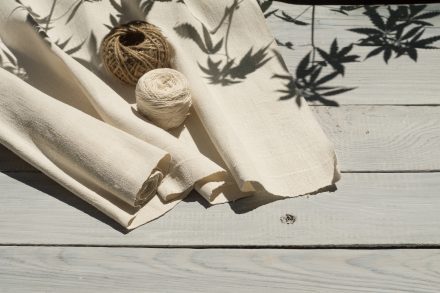
- Crop rotation – Flax and hemp are grown in rotation. This encourages natural activity in the soil, which structures, stabilises and reinforces it while improving the properties of subsequent crops.
- Carbon sinks – Thanks to their root system, flax and hemp bind large quantities of carbon to the soil.
- Zero waste – Every part of the plant can be utilised. The long and short fibres are used for clothing and upholstery, for making ropes or paper, or they become composite materials used in construction. The seeds are used to make flax or hemp oil; nettle residue can be turned into dye or into high-protein foods for cattle… the possibilities for value creation are endless.
Physical performance
This trio of bast fibres all boast high strength and very high breathability. They guarantee good ventilation and their temperature regulating properties make them cooling in summer and insulating in winter.
Made from flax, linen exploits its casual chic charms, combining sturdiness and understated sheen. Its widespread appeal makes it the quintessential queen of bast fibres, as evidenced by a 132% increase in flax acreage in Europe between 2009 and 2020.

Hemp, which had practically disappeared from the European Union in the 1960s, was saved by papermaking. It is now popular for its eco-friendly properties and is particularly used in denim, where the short fibres are blended with cotton to make a cottonised version.
There are several varieties of nettle. The appeal of ramie lies in its smooth, uniform, supple and glossy-looking fibres. Due to these characteristics, Chinese nettle is also called “oriental flax” or “plant silk”. Himalayan giant nettle is a hardy variety that feels rougher to the touch, but with highly resistant fibres particularly suitable for making thick cloth. Of the 11 nettle varieties identified in Europe, common nettle, Urtica Dioica, is the only one used as a textile fibre.
While they seem almost miraculous in current times, what are the best ways to promote and support the development of these fibres with a low environmental impact?
Smart Key #1 – Trace and certify
To sustain their advantages, flax, hemp and nettle fibres must be traced and measured as much as other fibres. There are two labels attesting to the high quality of flax, with long-fibre standards, and with common approaches used by the scutchers, combers and spinners, both in terms of variety selection and growing techniques, with the aim being zero inputs.
European Flax®, guarantees the traceability of premium flax grown in Western Europe, without GMOs or irrigation.
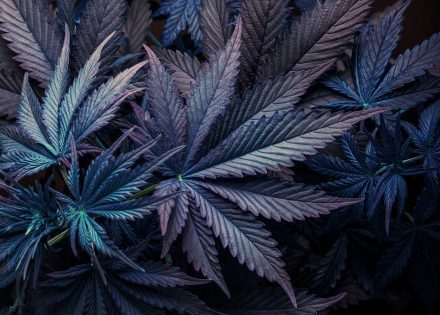
Masters of Linen ®, the Grail of European Linen, certifies all stages of the production process: from the field to the yarn, through to the fabric made from European Flax® fibres.
Naturally virtuous hemp and nettle fibres can claim the Oeko-Tex Standard 100 to guarantee that no harmful substances are used in production. While organic-grade fibres represent only minimal volumes for the time being, their quality can be verified thanks to OCS or GOTS certifications.
Smart Key #2 – Take part in innovating and scaling up
Weakened by decades of cotton supremacy, the industrial development of these fibres needs to be reinvigorated. Choosing them is also a means of actively encouraging long-term developments to support the renaissance of the bast-fibre industry.
Ramie relies on chemical-free, mechanical processing and remains difficult to spin with current processes. Hemp and ramie are still expensive niche products, often because available volumes are low and do not allow economies of scale. New industrial solutions must be developed to make them more affordable.
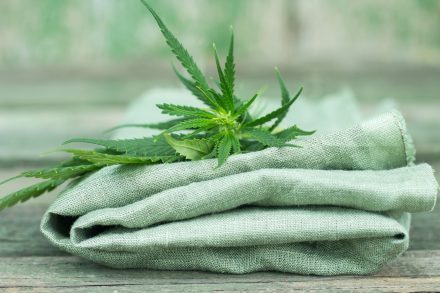
The coproducts generated by a same plant can be made more profitable in a variety of ways, with different industries built around these components.
The retting and scutching of hemp remain an obstacle to scaling up significantly, and the rather thick fibre cannot yet make up more than 20 to 30% of a blend. Some encouraging possibilities are being considered, such as adapting hemp for flax scutching lines, or the development of hemp straw as a cellulosic resource to develop new artificial materials, thus widening the field of possibilities within the next two to three years.
Smart Key #3 – Support the restructuring and strengths of the European bast-fibre industries
Linen, made from the leading bast fibre, flax, is experiencing a real revival thanks to brands wishing to capitalize on its strengths in their collections in a sustainable manner.
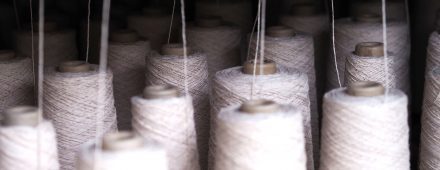
Whereas previously 80% of the fibre output from Western Europe was being sent to Asia to undergo various processes, a European industry based on relearning, teaching and know-how is being rebuilt.
France is opening new spinning mills, giving the country the capacity to develop an entirely local chain of production, from crop growing to manufacture. Not to be outdone, Portugal, Italy, Poland and Lithuania also have newly operational spinning mills or plan to have them in place by late 2022.
In places where demand far outstrips supply, bast fibres could be developed exponentially. The lessons learned from the unbridled success of cotton, and the associated intensive practices that have exhausted ecosystems, must serve as safeguards.
This potential boon will have to be combined with maintaining its environmental and social qualities in order to perpetuate its image as the leading responsible material. The work being carried out with the support of the European Confederation of Flax and Hemp (CELC) seeks, among other aims, to ensure a controlled development of the sector based on qualitative criteria such as a protected geographical indication. This proves that sustainable growth really is possible.
Learn more about sustainability with our Smart Keys series:
- The hidden face of cotton
- Cellulosic materials
- The mysteries of chemistry
- Biodegradability
- Traceability
- Alternative plant-based materials
- Polyester recycling
- Ecological and ethical metal accessories
- The secrets of sports technical fabrics
- Eco-packaging
- Recycling
- Sustainability & circularity
- The fundamentals of animal welfare
